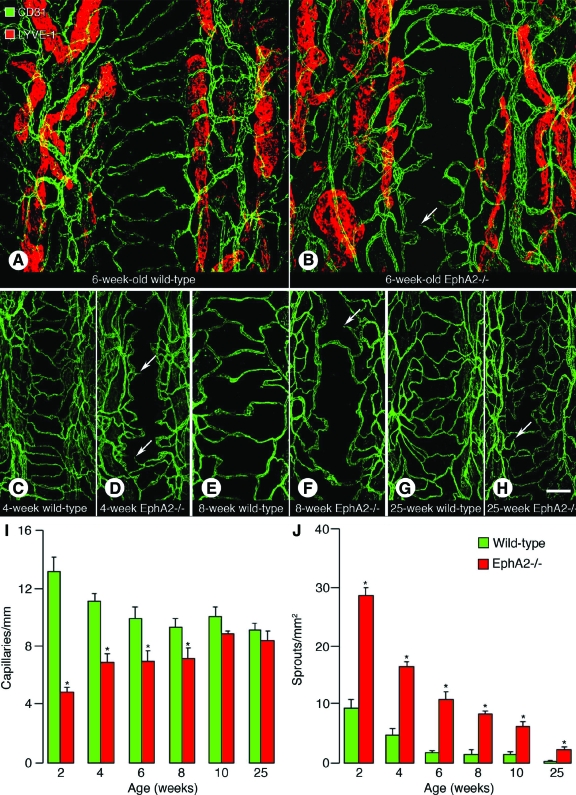Figure 2.
Number of capillaries and endothelial sprouts in wild-type and EphA2-deficient mouse airways. A–H: Confocal microscopic images of tracheal whole mounts. Arrows indicate endothelial sprouts. A and B: Tracheas isolated from 6-week-old wild-type (A) and EphA2-deficient (B) mice stained for CD31 (green) and LYVE-1 (red, lymphatics) immunoreactivity. C–H: Tracheas stained for CD31 (green) immunoreactivity isolated from 4-week-old wild-type (C) and EphA2-deficient (D) mice, 8-week-old wild-type (E) and EphA2-deficient (F) mice, and 25-week-old wild-type (G) and EphA2-deficient (H) mice. I: The number of crossing capillaries in mucosa overlying cartilage rings. J: The number of endothelial sprouts in mucosa overlying cartilage rings. Values are presented as means ± SEM; n = 5–8 mice per group; *P < 0.05 versus wild-type. EphA2−/−, EphA2-deficient mice. Scale bar in H applies to all panels: 130 μm in A and B; 100 μm in C–H.

